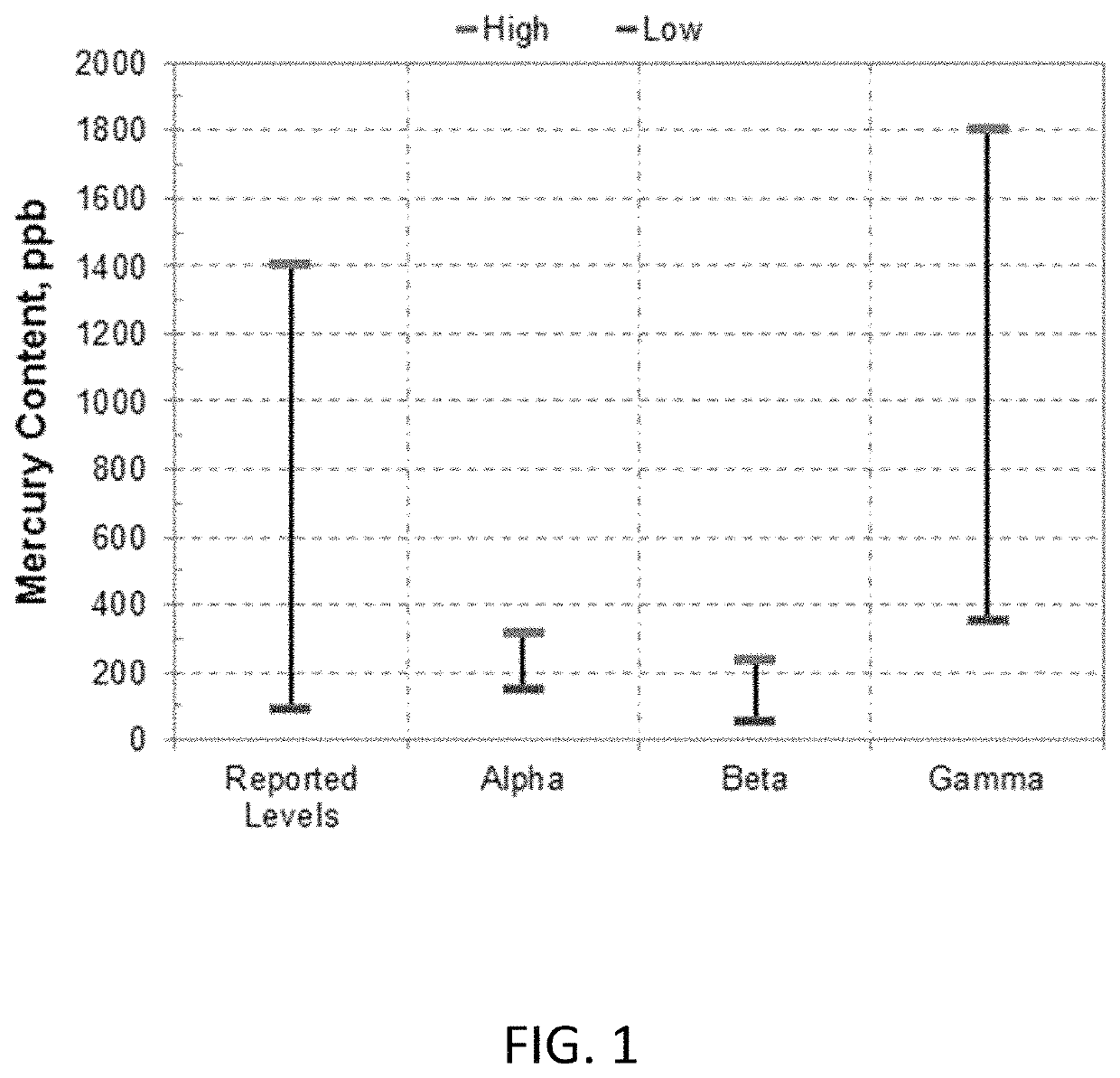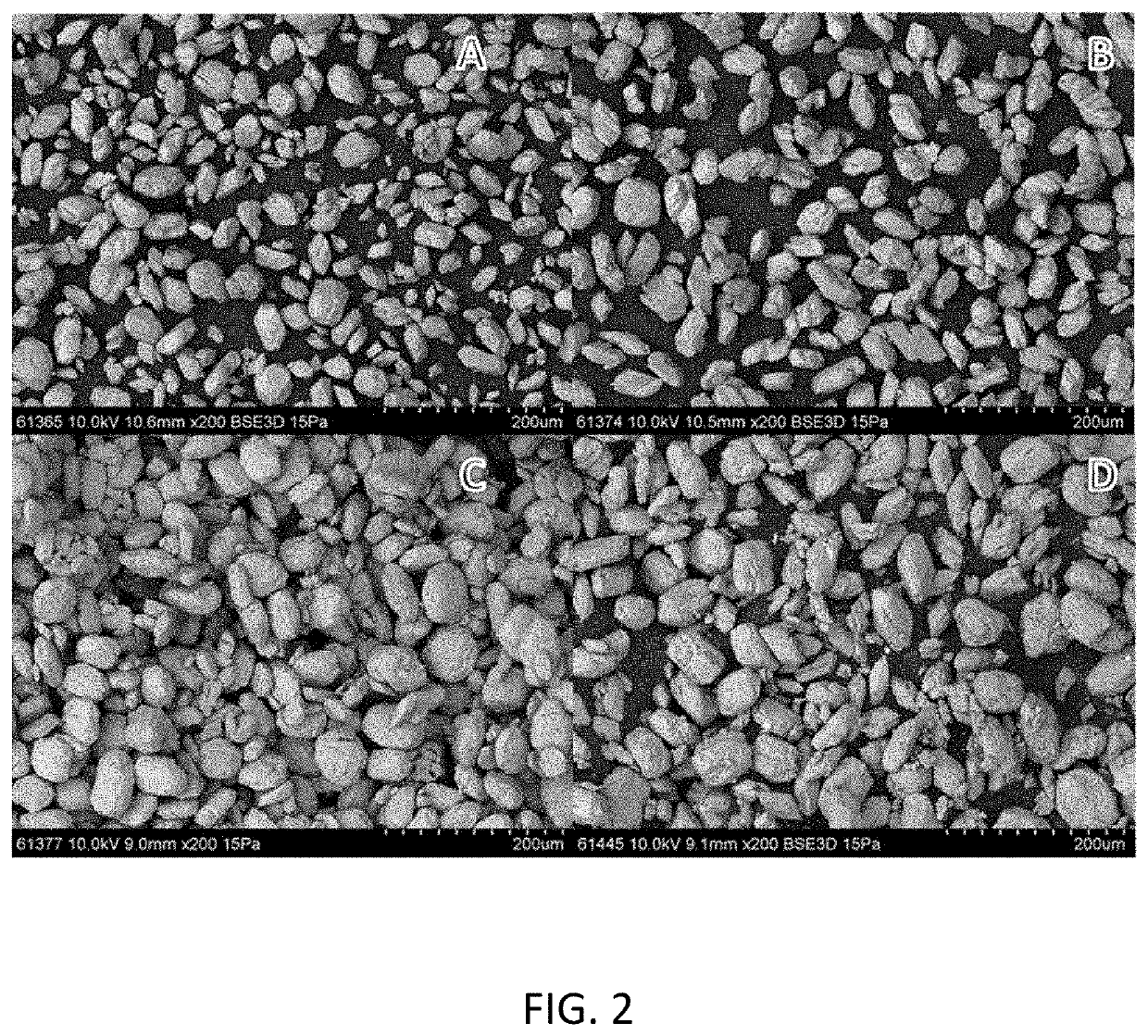Gypsum additive to control mercury
a technology of additives and mercury, applied in the field of additives and methods for controlling mercury, can solve the problems of reducing the capture efficiency of wfgd mercury, and difficulty in capture using existing air quality control devices
- Summary
- Abstract
- Description
- Claims
- Application Information
AI Technical Summary
Benefits of technology
Problems solved by technology
Method used
Image
Examples
examples
[0077]Various additives were tested by the inventors to prove the inventive concept of the present application. For example, some of the tested additives comprised various polymers. Some of the polymers were derived from at least two monomers: acrylic-x and an alkylamine. Some of the polymers were modified to contain a particular functional group. In some of the additives, the molar ratio between acrylic-x and alkylamine was from about 0.85 to about 1.5. In some of the additives, the alkylamine was selected from an ethyleneamine, a polyethylenepolyamine, ethylenediamine (EDA), diethylenetriamine (DETA), triethylenetetraamine (TETA), tetraethylenepetamine (TEPA), pentaethylenehexamine (PEHA), and any combination thereof. In some of the additives, the acrylic-x was selected from methyl acrylate, methyl methacrylate, ethyl acrylate, ethyl methacrylate, propyl acrylate, propyl methacrylate, and any combination thereof. In some of the additives, the functional group comprised a sulfide c...
PUM
| Property | Measurement | Unit |
|---|---|---|
| molar ratio | aaaaa | aaaaa |
| molar ratio | aaaaa | aaaaa |
| temperatures | aaaaa | aaaaa |
Abstract
Description
Claims
Application Information
 Login to View More
Login to View More - R&D
- Intellectual Property
- Life Sciences
- Materials
- Tech Scout
- Unparalleled Data Quality
- Higher Quality Content
- 60% Fewer Hallucinations
Browse by: Latest US Patents, China's latest patents, Technical Efficacy Thesaurus, Application Domain, Technology Topic, Popular Technical Reports.
© 2025 PatSnap. All rights reserved.Legal|Privacy policy|Modern Slavery Act Transparency Statement|Sitemap|About US| Contact US: help@patsnap.com



